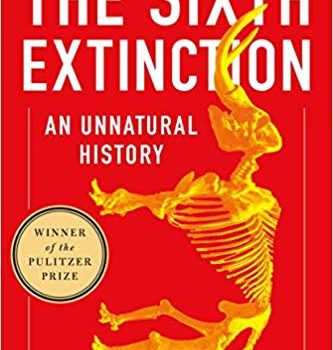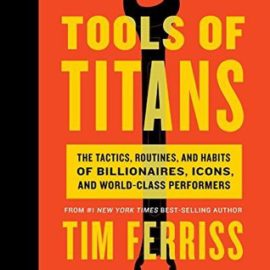
Want to learn the ideas in The Sixth Extinction better than ever? Read the world’s #1 book summary of The Sixth Extinction by Elizabeth Kolbert here.
Read a brief 1-Page Summary or watch video summaries curated by our expert team. Note: this book guide is not affiliated with or endorsed by the publisher or author, and we always encourage you to purchase and read the full book.
Video Summaries of The Sixth Extinction
We’ve scoured the Internet for the very best videos on The Sixth Extinction, from high-quality videos summaries to interviews or commentary by Elizabeth Kolbert.
1-Page Summary of The Sixth Extinction
Overall Summary
Elizabeth Kolbert learned about the sixth extinction of species and how it’s caused by humans in her book The Sixth Extinction. She also visited Panama to study the golden frog, which inspired her to learn more about extinction as well as its place in science history.
Writer Elizabeth Kolbert learned that, for most of the history of science, humans didn’t understand that some animals went extinct. It was Georges Cuvier, the influential naturalist who first proposed that some species are no longer alive. Scientists later discovered fossils of large mammals further legitimating his theory. Even after Charles Darwin published On The Origin Of Species in 1859 scientists didn’t fully grasp how human beings can influence the environment to cause extinction. It wasn’t until Alfred Newton tried to preserve a bird population in Iceland and realized humans could play a role in preserving species at risk of going extinct much earlier than other scientists did so.
A major milestone in understanding extinction was the paper written by Walter Alvarez and Luis Alvarez. They argued that a large asteroid killed off all of the dinosaurs, rather than dying out gradually over time. The theory became accepted because it reinforced another theory—that many species go extinct at almost the same time, instead of dying out slowly over thousands of years. One reason for this is that traits that were once useful may not be useful anymore after some event occurs, like an asteroid striking Earth. For example, ammonites—a prehistoric nautilus-like creature—were abundant because their eggs could travel across oceans easily on ocean currents. But after an asteroid struck Earth, their eggs couldn’t survive so they went extinct as well.
Humans have been altering the Earth for thousands of years, and now we are living in a time period called the Anthropocene. This is an era that will be defined by how humans change their environment, which has caused many species to die out or become endangered. Humans have altered the oceans by increasing ocean acidity levels and temperatures, which means that sea creatures will need to adapt to survive or they’ll go extinct.
Kolbert travels to the Great Barrier Reef and learns from scientists that higher temperatures and acidity have dramatically reduced coral reef diversity. Warmer waters will cause algae and plankton populations to increase, which in turn will reduce available nutrition for larger animals. She also visits tropical rainforests of South America where she sees how much biodiversity there is. In recent years, scientists have found evidence that different species are forced to migrate so they can find a suitable environment similar to the one they’re used to. At the same time, deforestation by farmers has decreased the amount of land available for wild creatures while some rainforest species will not survive environmental changes facing our planet. Furthermore, extinction of even a few rainforest species would greatly affect overall biodiversity since these species depend on each other very closely.
Another factor that contributes to the sixth extinction is human travel. Humans have been traveling around the world since prehistoric times, and species have been confined to different ecosystems. However, modern transportation has led to organisms from one ecosystem being introduced into another environment. This upsets their equilibrium as they are no longer isolated from other environments (for example, when non-native species are brought into a new area). The introduction of an invasive species tends to reduce biodiversity in the long run.





